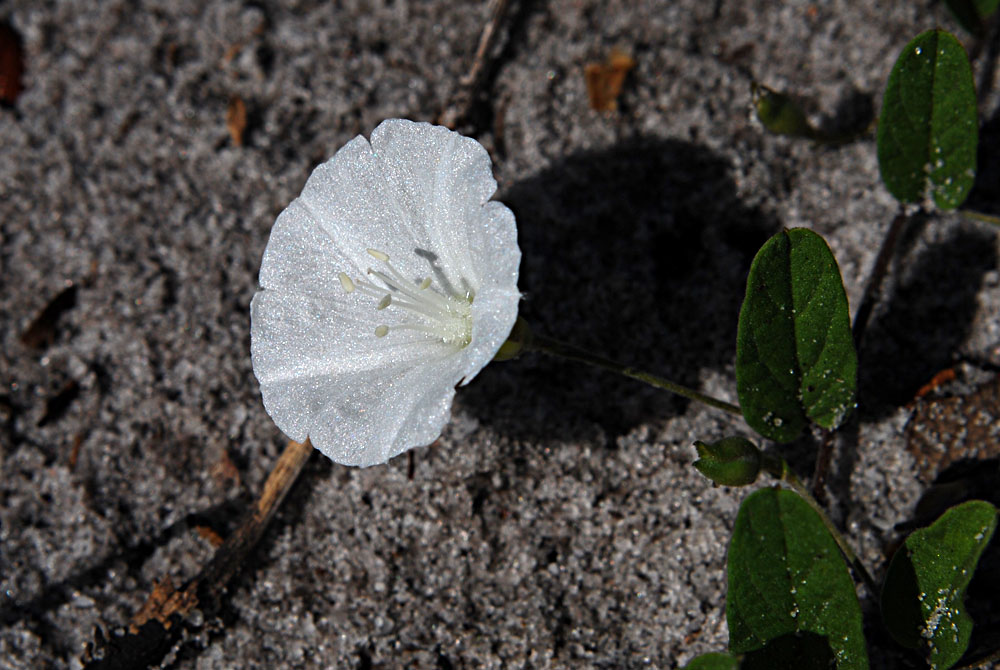Difference between revisions of "Stylisma villosa"
KatieMccoy (talk | contribs) |
KatieMccoy (talk | contribs) (→References and notes) |
||
| Line 55: | Line 55: | ||
==References and notes== | ==References and notes== | ||
Deyrup, M.A. and N.D. 2015. Database of observations of Hymenoptera visitations to flowers of plants on Archbold Biological Station, Florida, USA. | Deyrup, M.A. and N.D. 2015. Database of observations of Hymenoptera visitations to flowers of plants on Archbold Biological Station, Florida, USA. | ||
| − | |||
| − | |||
Revision as of 15:19, 18 March 2016
| Stylisma villosa | |
|---|---|

| |
| Photo by Wayne Matchett, SpaceCoastWildflowers.com | |
| Scientific classification | |
| Kingdom: | Plantae |
| Division: | Magnoliophyta - Flowering plants |
| Class: | Magnoliopsida – Dicotyledons |
| Order: | Solanales |
| Family: | Convolvulaceae |
| Genus: | Stylisma |
| Species: | S. villosa |
| Binomial name | |
| Stylisma villosa (Nash) House | |

| |
| Natural range of Stylisma villosa from USDA NRCS Plants Database. | |
Common name: hairy dawnflower
Contents
Taxonomic notes
Description
S. villosa is a perennial vine that has wiry, twining, thick, pubescent stems. The leaves are alternate, elliptical/oval, densely covered with white hairs and are held upright at a right angle to the ground, which reduces water loss from transpiration during the heat of the day. Inflorescence are solitary or in cymes of 3-7 flowers[1][2]. Flowers have white corollas and are about two centimeters broad[3]. This species is commonly mistaken for S. aquatica when not flowering[2].
Distribution
Found in Florida, Georgia, Mississippi, Louisiana, and Texas. Listed as vulnerable in Texas[4].
Ecology
Habitat
In the Coastal Plain in Florida, S. villosa habitats include longleaf pine/scrub oak sand ridges, moist lake shores, and sandy longleaf pine-scrub hickory-oak woods. It can be found in disturbed scrubs, hammocks and along canals through a burned wetland slash pine savanna. Associated species include Quercus laevis, Q. incana, Q. virginiana, Q. myrtifolia, Q. chapmanii, Serenoa repens, and Ceanothus[3].
Phenology
Flowers May through June and fruits June through November[3].
Seed dispersal
Seed bank and germination
Fire ecology
It has been observed growing in burned wetland slash pine savannas[3].
Pollination
The following Hymenoptera families and species were observed visiting flowers of Stylisma villosa at Archbold Biological Station (Deyrup 2015):
Megachilidae: Dianthidium floridiense
Use by animals
Diseases and parasites
Conservation and Management
Cultivation and restoration
Photo Gallery
Flowers of Stylisma villosa Photo by Wayne Matchett, SpaceCoastWildflowers.com
References and notes
Deyrup, M.A. and N.D. 2015. Database of observations of Hymenoptera visitations to flowers of plants on Archbold Biological Station, Florida, USA.
- ↑ [[1]]Native Florida Wildflowers. Accessed: March 16, 2016
- ↑ 2.0 2.1 Hoffman, S.J.. Taxonomic and phylogenetic evaluation of Stylisma (Convolvulaceae). Thesis: University of North Carolina Wilmington
- ↑ 3.0 3.1 3.2 3.3 Florida State University Robert K. Godfrey Herbarium database. URL: http://herbarium.bio.fsu.edu. Last accessed: November 2015. Collectors: Edwin L. Bridges, Robert K. Godfrey, Robert Kral, O. Lakela, Sidney McDaniel, J.B. McFarlin, Steve L. Orzell, Allen G. Shuey. States and Counties: Florida: DeSoto, Highlands, Martin, Palm Beach, Orange, Polk. Compiled by Tall Timbers Research Station and Land Conservancy.
- ↑ [[2]]NatureServe. Accessed: March 16, 2016
